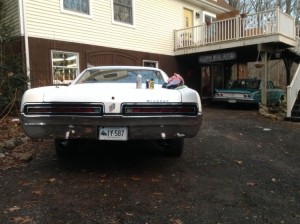By Owen Zamecnik
For those of us who drive, we know that winter comes with change. Road conditions worsen for both driver and the car itself. Of course we all know when there is snow and ice on the roads to slow down, take turns easier, and gradually come to a complete stop. But for those of you who don’t love your cars like I love mine, here’s a few good tips to your ride clean, protected and safe in the winter time.
First off, I’ll talk about the obvious. If you’ve got a car with four wheel drive, you probably feel much more comfortable driving in winter conditions than someone with only one or two wheel drive. If you do have four wheel drive, it may or may not always be engaged. Some vehicles are built with constant four wheel drive that concentrates power to certain wheels that are losing traction, while keeping the rest moving at different variations. However, many of you probably have a selector that might say “2wd-4wdlow-4wdhigh”. In normal dry conditions, two wheel drive is always the best selection, as it will save you some gas. When conditions get tough, throw it in 4 wheel high. Unless your vehicle gets stuck, or you’re climbing an icy incline, you wont really need to use Four wheel low. This will also use the most gas, so it is never a good idea to drive in 4-low. Another thing to remember if your worried about traction, is to check your tire pressure. If you have a smaller car, like a Comet or a Civic, with smaller thinner wheels, then you want to keep your tire pressure up around 30-32 psi in the front, and 32-35psi in the rear. If you drive a car with large, wide tires, then unless you have special snow tires, you’re going to want to keep the pressure slightly lower than usual so that the tire has more contact with the ground. If you drive on wide tires in the snow with the inflation too high, they become rubber sleds underneath your car,causing your car to slide more rather than grip the road. If after checking all this, you still have traction issues, than I recommend a common, temporary solution. Many people will go to a local hardware store and buy bags of sand to put in their car for weight. They are commonly sold in 70 lb tubes. I recently bought four of them for my car, adding 280lbs of traction to the rear wheels. When adding extra weight, however, if is important to pay attention to where in your car it goes. It is ideal to have the weight directly over the drive wheels, which in most cases is the front wheels. so unless you have a rear engine car, there’s not much you can do about focusing the weight on those wheels. The best thing to do is add weight in the trunk to keep the rear wheels held down and keep your car from fish-tailing and spinning out. But be careful, if the weight is placed to close to the rear of the car, it will only make your car prone to spinning out. What you really want to do is put the weight far back in the trunk, as close to being directly above the wheels as possible. In cars with rear wheel drive this is especially important. My car, for example, has a weight ratio of about 70% in front, and 30% in the rear. When the power is applied to the rear wheels, they will want to break free from the ground, seeing as most of the weight is concentrated in the front, and not so much over the rear wheels.
When I asked Mr. Cole for some suggestions, he told me to make sure to do the one procedure that he tells every student who goes through his classes. “Always make sure you do an under hood observation,” he said. Even though this is a year-round practice, it is one that you will want to do before the wintery weather because having your car break down in freezing, windy conditions is certainly not favorable. Doing an under hood observation means checking all fluid levels, electrical connections, belts, and your battery. The main places to be checked are the coolant and oil. Anti-freeze (coolant) is diluted 50% with water, which isn’t enough to freeze in the cold, but its also not enough to boil at running temperatures. If you have too much water in your cooling system, it can freeze, in some cases inside the engine, which will indeed crack your engine block. and that will be the end of that. If you are unsure of the mix ration in your car, it can be tested with a hyrdrometer. Also make sure your coolant is full, because air in the cooling system will cause the vehicle to overheat.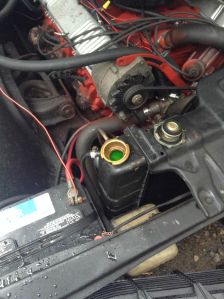 Engine oil should also be checked. It is a good idea to do an oil change before the winter so that it won’t have to be done again until spring. Oil weight is also another factor to consider. If your car has too thick of an oil weight, it will be very thick in the cold, like honey, causing your engine to have trouble starting and warming up. It can also decrease your engine’s performance. Another part of the under hood observation is to check your wiper blades and windshield washer fluid. Treating glass will also improve visibility. If your glass is dirty, and fogs up, it becomes extremely difficult to see while you wait for your defroster to kick in.
Engine oil should also be checked. It is a good idea to do an oil change before the winter so that it won’t have to be done again until spring. Oil weight is also another factor to consider. If your car has too thick of an oil weight, it will be very thick in the cold, like honey, causing your engine to have trouble starting and warming up. It can also decrease your engine’s performance. Another part of the under hood observation is to check your wiper blades and windshield washer fluid. Treating glass will also improve visibility. If your glass is dirty, and fogs up, it becomes extremely difficult to see while you wait for your defroster to kick in.
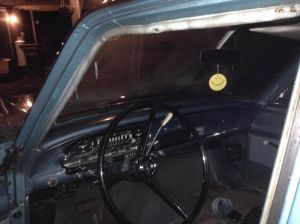 The best thing to do to prevent this is to first thoroughly clean your windows. This means washing with soap and water before cleaning with glass cleaner. And if you’re like me and want to be extra cautious, pick up a small bottle of Rainex and apply it to both the inside and outside of all the glass. When done correctly, this will greatly reduce fogging. For those of us who have trouble opening our doors in the morning on a cold day, there is indeed a remedy for that too. Mr. Cole told me that if you apply either a vylin dressing or some sort of silicone spray to the door seals, it will repel the water that causes your doors to freeze shut. This same principle applies to those of us who get their doors open but then can’t close them. Simply spray some WD-40 or another water displacing compound inside your car door onto the door locks.
The best thing to do to prevent this is to first thoroughly clean your windows. This means washing with soap and water before cleaning with glass cleaner. And if you’re like me and want to be extra cautious, pick up a small bottle of Rainex and apply it to both the inside and outside of all the glass. When done correctly, this will greatly reduce fogging. For those of us who have trouble opening our doors in the morning on a cold day, there is indeed a remedy for that too. Mr. Cole told me that if you apply either a vylin dressing or some sort of silicone spray to the door seals, it will repel the water that causes your doors to freeze shut. This same principle applies to those of us who get their doors open but then can’t close them. Simply spray some WD-40 or another water displacing compound inside your car door onto the door locks.
The final recommendation I have for winterizing your automobile is a good detailing. This means washing, waxing, and protecting. Of course we all know that the sand, dirt and salt on the roads makes your car dirty, but many of us don’t recognize the fact that over time, it will do damage to the paint and especially the chrome (if you have any). Former Morgan student, Jon Nash, knows this very well. He currently drives a 1969 Ford Fairlane, which has withstood 45 years of winter abuse without much prevention: “Trust me,” Jon said, “take the time and wax your car before it’s too late”. The bumpers on his car speak for themselves.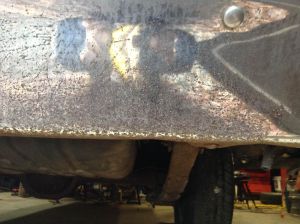
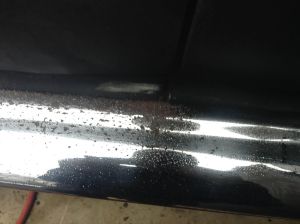 And these pictures are after removing as much rust as possible. Let this be a lesson to you all! Not to mention that the waxing just makes your car look sparkling clean! Here are some before and after pictures of my car
And these pictures are after removing as much rust as possible. Let this be a lesson to you all! Not to mention that the waxing just makes your car look sparkling clean! Here are some before and after pictures of my car


 At the very least, you should get a hose whenever possible and blast off your car with clean fresh water. The underside of the car is the most important because it sees the most abuse. My car has a nice hole in the trunk from 47 years of winters that the previous owner did nothing about. Let it be yet another lesson
At the very least, you should get a hose whenever possible and blast off your car with clean fresh water. The underside of the car is the most important because it sees the most abuse. My car has a nice hole in the trunk from 47 years of winters that the previous owner did nothing about. Let it be yet another lesson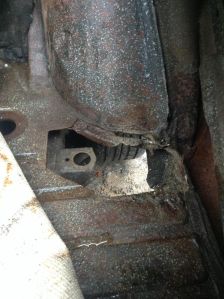 If you love your car,take care of it in the winter, it will last much longer!
If you love your car,take care of it in the winter, it will last much longer!


